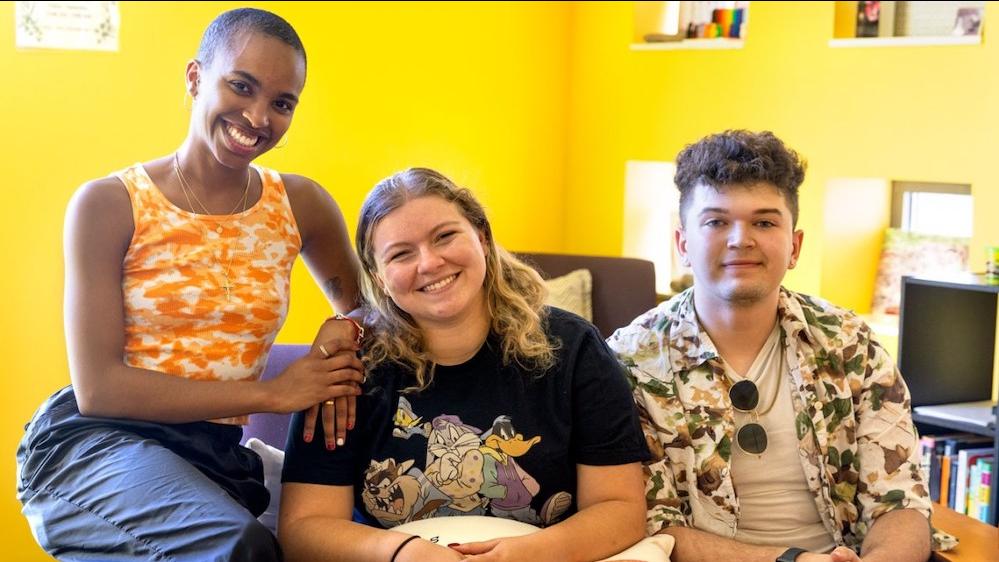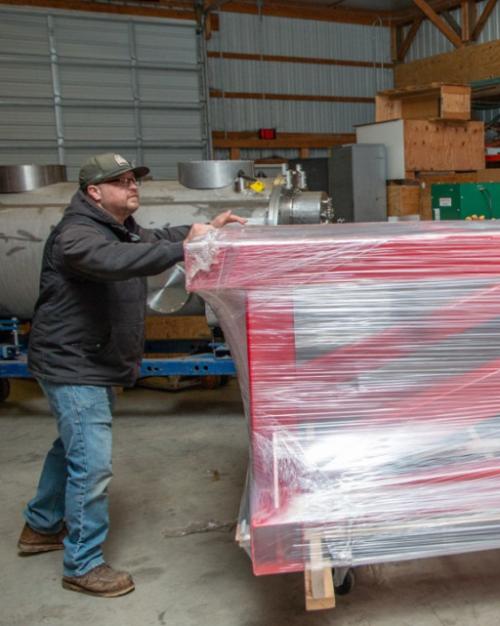From exploring Ithaca’s drag history to researching AIDS activism on campus to offering a tour and history of Cornell’s Loving House, students in an Introduction to LGBTQ Studies class this semester brought key events in Cornell’s history to light through short documentaries.
The films created by the class, which draws students from all of Cornell’s schools and colleges, are appropriate as a way to help to celebrate the 30th anniversary of Cornell’s LGBT Studies Program this year. Sara Warner, associate professor of performing and media arts and director of the LGBT Studies Program in the College of Arts and Sciences, said the eight student groups used the Cornell University Library’s digital Cornell Daily Sun archives and History of Sexuality collection for research before bringing their works to life on film.
The students used various techniques to tell their stories – interviewing alumni, re-enacting historical events and discussions, showing archival photos and documents and visiting locations where the events took place.
“The goal of this project was for the students to have fun making and documenting LGBT+ history and, through this collaborative process of DIY ‘artivism,’ to understand themselves as social actors in a long lineage of fierce Cornellians dating back to Flora Rose and Martha Van Rensselaer,” Warner said.
Warner, a Stephen H. Weiss Junior Teaching Fellow, secured a Cornell Council for the Arts Grant that enabled artist and activist Ross Haarstad ‘80 to work with students on their documentary projects, along with teaching assistant Sam Blake, a theater director and scholar of drag history.
In her freshman year, Milan Taylor ’24 lived in Loving House, a program house dedicated to supporting and protecting Cornell’s LGBTQ community. She worked with three other students in the class to tell the story of attempts to create a similar house for LGBTQ students in the 1990s and how those efforts were reinvigorated years later, with the house finally opening in 2019.
“A student picked up the archives of work that was done 25 years earlier (to form a similar house) and because there was more support for gay and lesbian students now, it was so much easier to get this passed,” said Ariya Roberts ’23.
The students spoke with three alumni from the 1990s who were involved in that effort, connecting with them through LinkedIn.
“They were all really excited to talk to students about their experiences at Cornell,” Taylor said. “They gave us photo materials and set aside time to talk to us and be genuine and open and honest.”
Jessica Benkert ’24 and her team researched the rise of AIDS activism at Cornell and in Tompkins County in the 1980s.
“Our group was drawn to the gravity of AIDS, which had not yet been covered in our class at the start of the project, and we were very curious about the university's handling of the initial outbreak, something we could all relate to living through with the COVID-19 pandemic at Cornell,” Benkert said.
“What surprised me the most about the history we learned through the project was that with immense adversity, the queer community became stronger,” she said. “The gay coffee shops, bookstores, bars, game nights and the myriad of organizations and support groups that flourished at this time for both the purpose of activism and simple enjoyment astounds me.”
The group interviewed two Cornell alumni who were leaders of the movement to educate the community about AIDS and advocate for gay and lesbian resources on campus.
“We learned through them that even institutionalized and organized efforts remain largely oral histories that live almost exclusively within those who experienced the events,” Benkert said. “Rather than a cumulative summation of the information, we were able to live the experiences of the activists who came before us: using their creativity to document or create change.”
Selected documentaries will be posted, pending permissions, on the LGBT Studies website.





